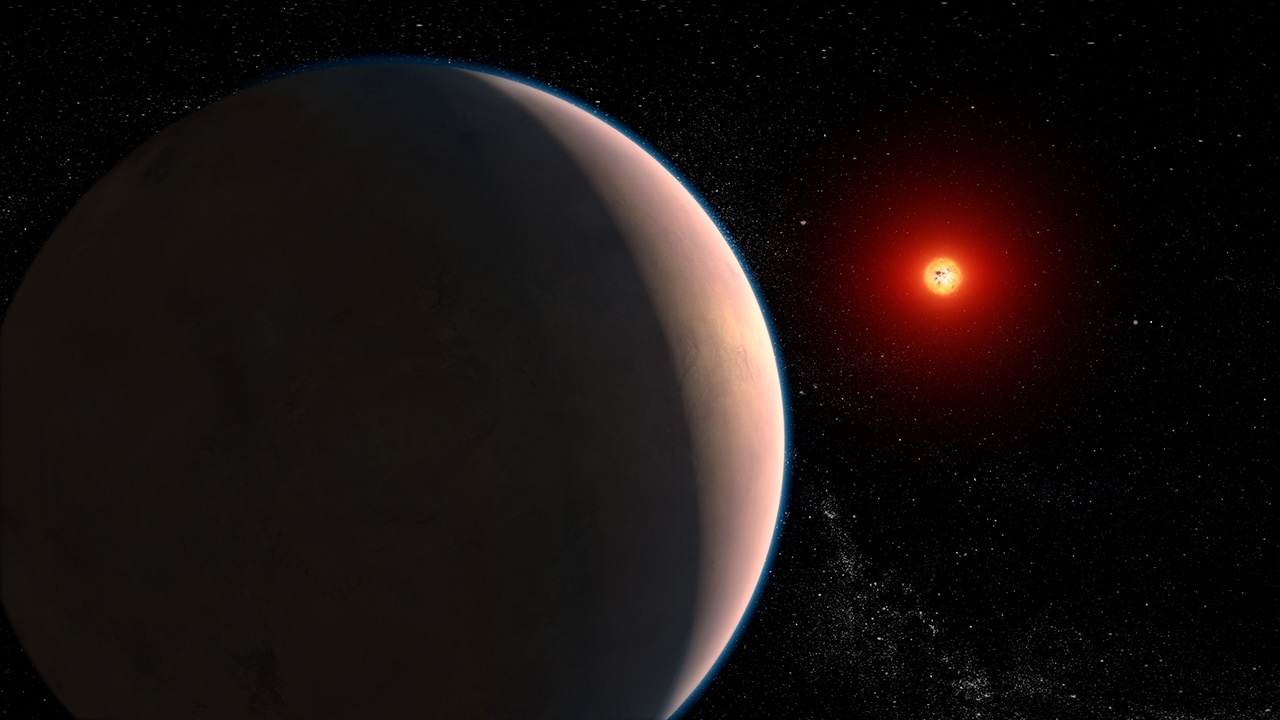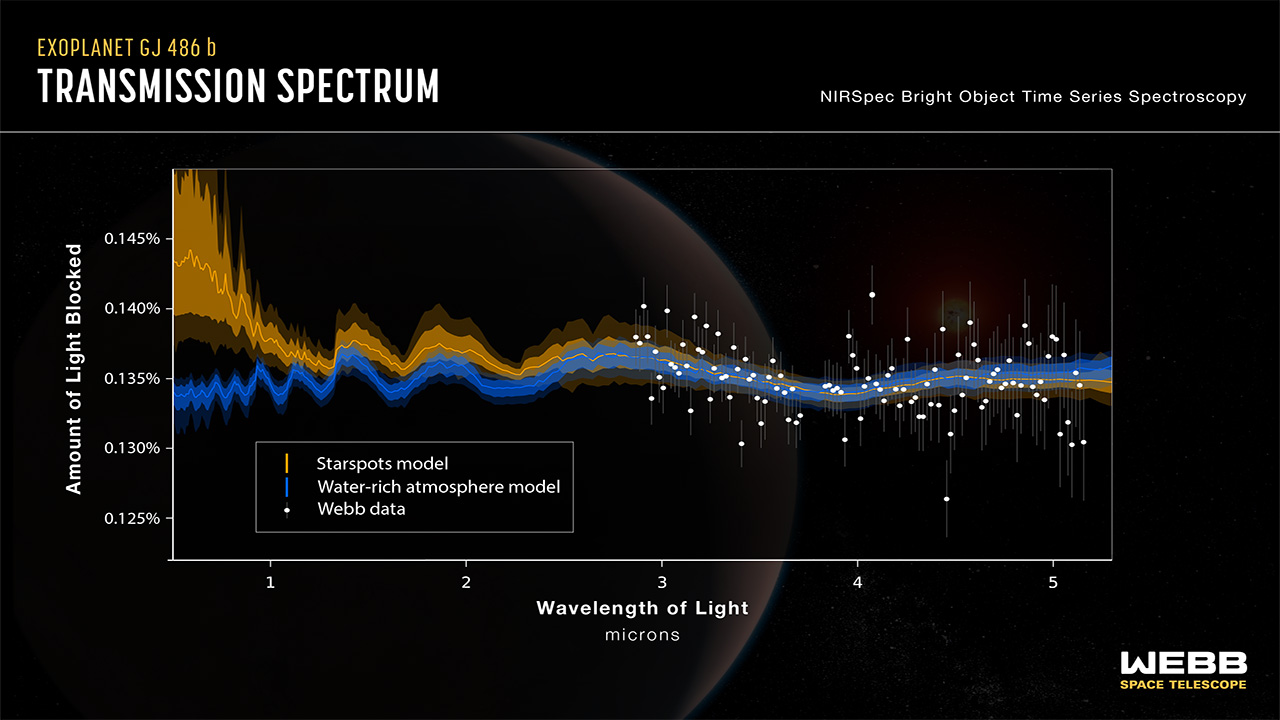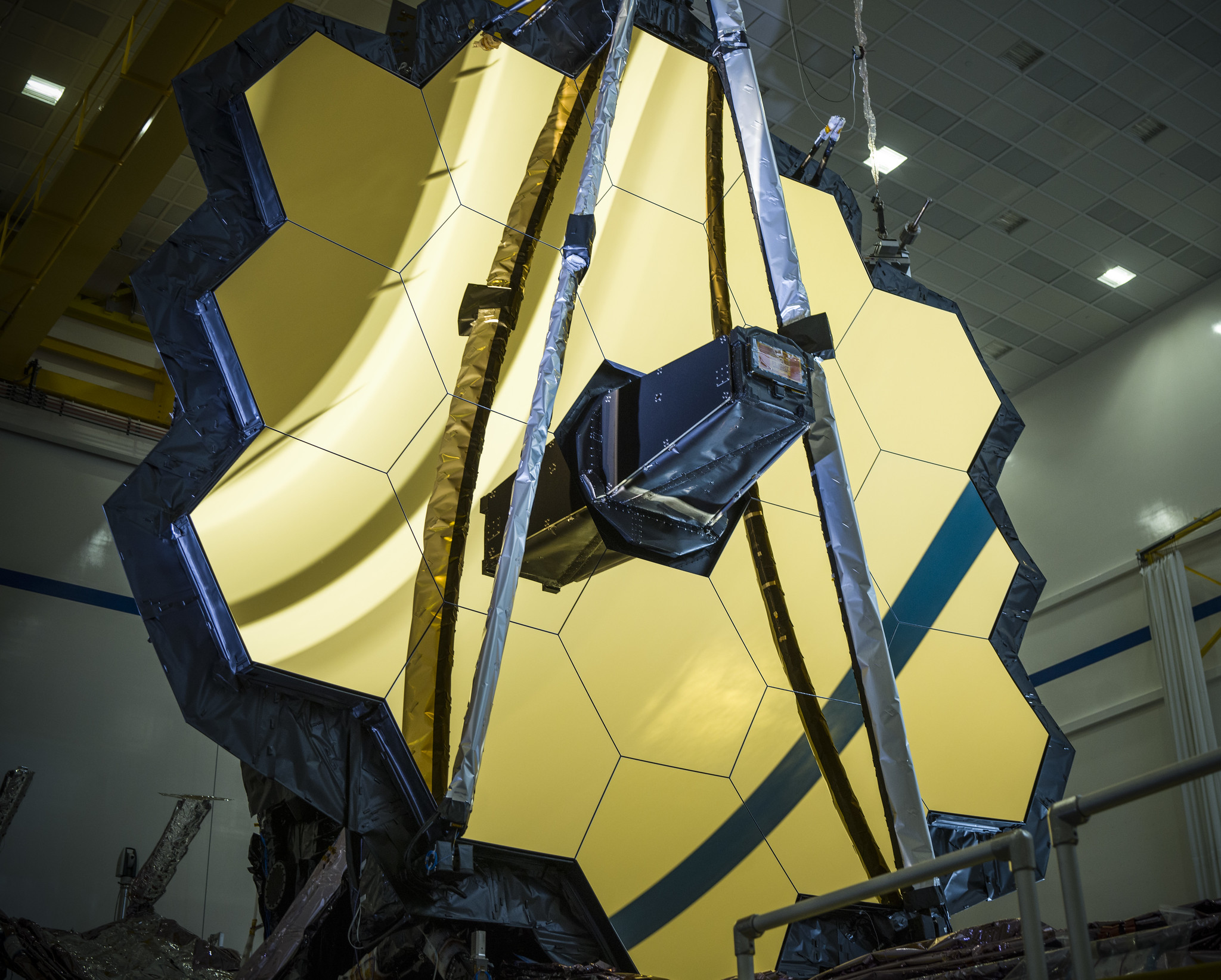James Webb Space Telescope detects water vapor around alien planet. But where did it come from?
If confirmed, the presence of an atmosphere would be a breakthrough for exoplanet research.

We could be on the verge of a major breakthrough in the search for other worlds that might support life.
Astronomers used the James Webb Space Telescope (JWST) to observe water vapor around a distant rocky planet. The water vapor could indicate the presence of an atmosphere around the extrasolar planet, or exoplanet, a discovery that could be important for our search for habitable worlds outside the solar system. However, the scientists behind the discovery caution that this water vapor could be coming from the world's host star rather than the planet itself.
"Water vapor in an atmosphere on a hot rocky planet would represent a major breakthrough for exoplanet science," principal investigator behind the findings and Johns Hopkins University Applied Physics Laboratory researcher, Kevin Stevenson said in a statement. "But we must be careful and make sure that the star is not the culprit."
Related: The 10 most Earth-like exoplanets
The exoplanet, designated GJ 486 b, orbits a red dwarf star located 26 light-years away in the Virgo constellation. Although it has three times the mass of Earth, it is less than a third the size of our planet. GJ 486 b takes less than 1.5 Earth days to orbit its star and is probably tidally locked to the red dwarf, meaning it perpetually shows the same face to its star.
Red dwarfs like the parent star of GJ 486 b are the most common form of stars in the cosmos, meaning that statistically speaking, rocky exoplanets are most likely to be found orbiting such a stellar object.
Red dwarf stars are also cooler than other types of stars, meaning that a planet must orbit them tightly to remain warm enough to host liquid water, a vital element needed for life. But, red dwarfs also emit violent and powerful ultraviolet and X-ray radiation when they are young that would blast away the atmospheres of planets that are too close, potentially making those exoplanets very inhospitable to life.
Get the Space.com Newsletter
Breaking space news, the latest updates on rocket launches, skywatching events and more!
That means astronomers are currently keen to discover if a rocky planet in such a harsh environment could manage to both form an atmosphere and then hang on to it long enough for life to take hold, a process that took around a billion years on Earth.
In an attempt to answer this question, the team pointed the JWST and its Near-Infrared Spectrograph (NIRSpec) instrument toward GJ 486 b and observed the planet as it crossed, or transited, the face of its star. Despite the fact the planet is extremely close to its star and has a temperature of 800 degrees Fahrenheit (430 degrees Celsius) making it unfavorable to liquid water, the astronomers discovered traces of water vapor.
The fact that GJ 486 b transits its star from our perspective means that when it is in front of the red dwarf, starlight shines through the atmosphere of the exoplanet. Different elements and chemical compounds absorb and emit various wavelengths of light that enable them to be identified, meaning looking at the light emanating from the planet during a trip around its star can reveal what its potential atmosphere is made of. Searching for these chemical fingerprints in atmosphere-filtered starlight is called "transmission spectroscopy."
The astronomers observed GJ 486 b with the JWST for two transits, each of which lasted just an hour. They then analyzed the collected data using three distant methods which showed the same pattern — a flat spectrum with an interesting peak in shortwave infrared light. They determined that the most likely cause of this peak was water vapor.

"We see a signal and it's almost certainly due to water," research lead author and University of Arizona astronomer Sarah Moran said. "But we can't tell yet if that water is part of the planet's atmosphere, meaning the planet has an atmosphere, or if we're just seeing a water signature coming from the star."
Water vapor has previously been seen in starspots, which we call sunspots on our own star the sun. These spots are darker, cooler regions of stars that form when high concentrations of the magnetic field deep within a star are brought up to its surface. These regions can form disturbances such as solar flares or coronal mass ejections (CMEs).
Even though GJ 486 b's host star is cooler than the sun, water vapor could still concentrate in starspots. If that is the case, this could create a signal that mimics a planetary atmosphere.
"We didn't observe evidence of the planet crossing any starspots during the transits. But that doesn't mean that there aren't spots elsewhere on the star," research co-author and University of Michigan scientist Ryan MacDonald said in the statement. "And that's exactly the physical scenario that would imprint this water signal into the data and could wind up looking like a planetary atmosphere."
If there is an atmosphere around GJ 486 b, then radiation from its red dwarf parent star will constantly erode it, meaning it has to be replenished by steam from the exoplanet's interior ejected by volcanic activity.

To determine if this water vapor is from an atmosphere around this exoplanet and just how much water is present astronomers will need to further observe GJ 486 b and its star. To do this the JWST's Mid-Infrared Instrument (MIRI) will examine the system, focusing on the planet's permanently star-facing "dayside."
Should GJ 486 b have a thin atmosphere or no atmosphere at all then the hottest region of its dayside should be directly under the red dwarf star. If this hottest point is offset, however, this could indicate the presence of an atmosphere that is thick enough to circulate heat.
The JWST's continuted investigation of this planet will also integrate another instrument aboard the powerful space telescope, the Near-Infrared Imager and Slitless Spectrograph (NIRISS).
"It's joining multiple instruments together that will really pin down whether or not this planet has an atmosphere," Stevenson concluded.
The team's research has been accepted for publication in the Astrophysical Journal Letters. A pre-print version is available on arXiv.org.
Follow us on Twitter @Spacedotcom or on Facebook.
Join our Space Forums to keep talking space on the latest missions, night sky and more! And if you have a news tip, correction or comment, let us know at: community@space.com.

Robert Lea is a science journalist in the U.K. whose articles have been published in Physics World, New Scientist, Astronomy Magazine, All About Space, Newsweek and ZME Science. He also writes about science communication for Elsevier and the European Journal of Physics. Rob holds a bachelor of science degree in physics and astronomy from the U.K.’s Open University. Follow him on Twitter @sciencef1rst.
-
rod The paper cited, however, https://arxiv.org/abs/2305.00868 is interesting.Reply
"Here, we present a 2.8-5.2 micron JWST NIRSpec/G395H transmission spectrum of the warm (700 K, 40.3x Earth's insolation) super-Earth GJ 486b (1.3 R⊕ and 3.0 M⊕)."
Given the radius and mass, this exoplanet has about 1.7748E+00 stronger surface gravity than Earth, escape velocity 16.98439559 or nearly 17 km/s. So this is a hot super-Earth with a deeper gravity well than Earth. There is no place like home it seems in exoplanet studies :)









